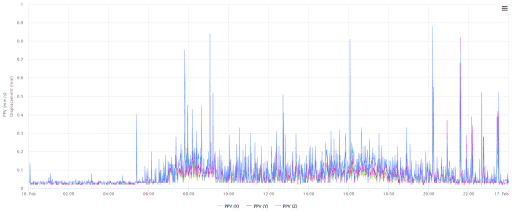BUILDING VIBRATION MONITORING
Vibration monitoring of commercial buildings is one of the specialist areas at Vibration Monitoring Services Ltd. In today's dynamic urban environments, various factors contribute to the vibrations experienced within structures, making it essential to address this issue with precision and expertise. Vibration monitoring serves as an invaluable tool for identifying the underlying causes of these disturbances. It is important to recognize that almost any property can be affected by vibration, and the integrity of a building's structure can be notably influenced by the duration, amplitude, and frequency of the vibrations encountered
Possible Causes of Building Vibration
Numerous factors can lead to vibration issues in a building, particularly in commercial settings where activity is continuous and varied. One of the most common sources of vibration is construction work taking place in proximity to the building. This expansive category encompasses a wide range of activities, including but not limited to piling operations, the demolition of existing structures, excavation of ground and foundational elements, and the movement of heavy machinery or vehicles in the vicinity. These activities can generate significant groundborne vibrations that can propagate into nearby buildings, potentially compromising their structural integrity.
In addition to external disturbances from construction, a range of internal factors can contribute to vibration within commercial buildings. For instance, maintenance issues with essential equipment such as Air Handling Units (AHUs), chillers, pumps, or other types of rotating machinery can result in excessive vibration levels. These mechanical systems, if not properly maintained, can emit vibrations that resonate through building structures, leading to discomfort for the occupants and potential long-term damage to the building’s infrastructure.
It is critical to recognize that building vibration does not solely pertain to the physical stability of the structure; it also has the potential to cause significant distress to the building’s occupants. In environments where productivity and comfort are paramount, excessive vibrations can lead to distractions and dissatisfaction. By implementing a thorough building vibration monitoring strategy, property owners and facility managers can not only identify the causes of such problems but also work towards mitigating their effects effectively.
Monitoring Building Vibration
When measuring vibration within buildings, our advanced vibration monitors assess key parameters such as acceleration, displacement, and velocity. This multifaceted approach enables us to pinpoint the exact cause of the vibrations experienced within a structure and provides a clearer understanding of how they affect the building’s integrity and its occupants.
Our services are designed for swift deployment, with the capability to install the latest vibration monitoring equipment on-site quickly. This efficiency allows us to capture real-time data, facilitating timely analysis by our team of expert engineers. The use of up-to-date technology ensures that the monitoring processes adhere to industry standards and deliver reliable data for informed decision-making.
British Standard Guidelines
All vibration monitoring conducted by Vibration Monitoring Services Ltd is performed according to relevant British Standards, specifically BS 7385-2:1993, which provides an evaluation and measurement framework for groundborne vibrations in buildings. This standard outlines the guidelines necessary to assess damage levels effectively and safeguard the integrity of structures. Furthermore, we recognize that each situation is unique; thus, we offer tailored vibration monitoring solutions that align with your specific requirements and specifications.
Our commitment is to not only meet industry standards but also to provide you with bespoke services that enhance your understanding of building vibrations and their impact.

Contact our Vibration Experts Today
For more information about vibration monitoring please contact our friendly team today on: 0208 108 0440.

.svg.png?size=md)






